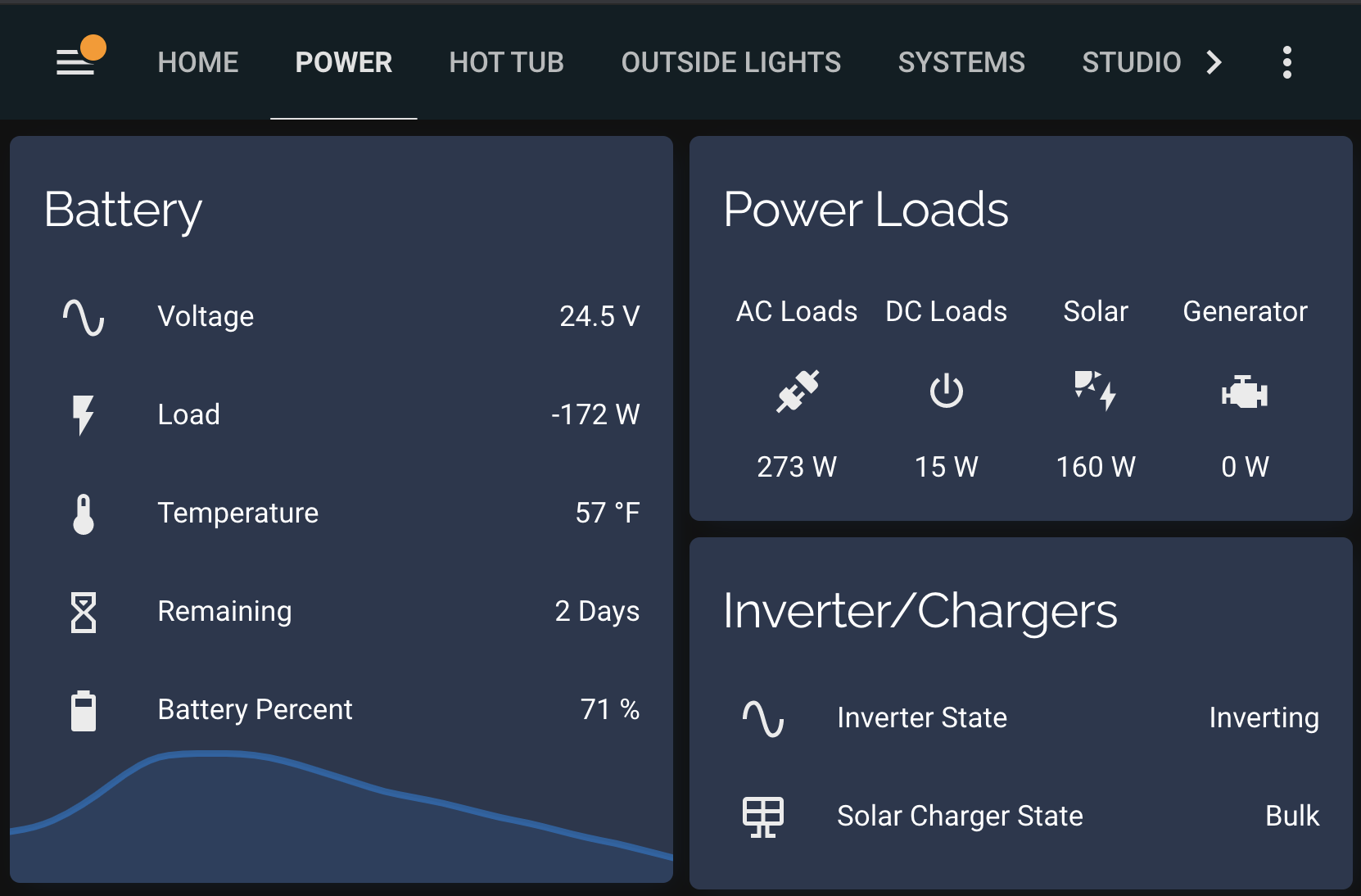Hi - forum newbie here,
I'm looking at upgrading my off grid set up and welcome comments on the proposed works.
I'm keen to take advantage of the solar generation when my battery bank is charged (see No 7 below) and am still looking for solutions. This is one of the main things I'm struggling with so if anyone can help that'd be fantastic.
Having a way to monitor the whole system would also be great. Currently no comms leads run between any of the Victron kit. Maybe there's a monitoring solution built in to the multiplusII - which I haven't found time to fully research yet. So any pointers on how these devices should be talking to each other is also gratefully received.
And the other main thing I'm struggling to find is a resistive element solution that can be wall mounted for my ballast load - which would replace my elecky convection heaters (see No 6 below).
I've included a sketch of my existing and proposed layout to help with the context. The rational behind these changes is to upgrade some of the 9 year old components, to switch from a flooded lead acid to LiFEPO4 battery bank, add heating to the small outbuilding (approx 40 sq m) as part of the renovation works, optimise how things are configured and be able to monitoring the system.
Proposed Upgrade Info
- Upgrade inverter to a Victron Multiplus II
- Upgrade battery bank to a 48v 16s 2p prismatic battery solution using 280Ah cells, add a BMS - possibly from overkillSolar, new enclosure with low temp heating solution. Batts will probably be imported from China via AliExpress or Alibaba.
- Install a new change over unit to create an additional route for the ballast load from the existing hydro. This would divert the ballast to heat water for under floor heating in an outbuilding that's slowly being renovated. I've an M&E engineer who'll build this for me.
- Install a new 250l unvented tank. Possibly something from Gledhill.
- Install a new pico hydro scheme that’s designed to run in our wet Welsh winters to generate hot water. Probably using an off the shelf solution like PowerSprout, AmpHydro or StreamEngine
- Upgrade resistive ballast elements to a wall mounted solution. Still looking and struggling to identify components that could work.
- Identify a solution to harness energy from the solar PV when the batts are fully charged and also have a way to monitor the entire system.
If anyone spots any errors, has suggestions or can offer any input, all comments are encouraged and welcome.
Thanks in advance


